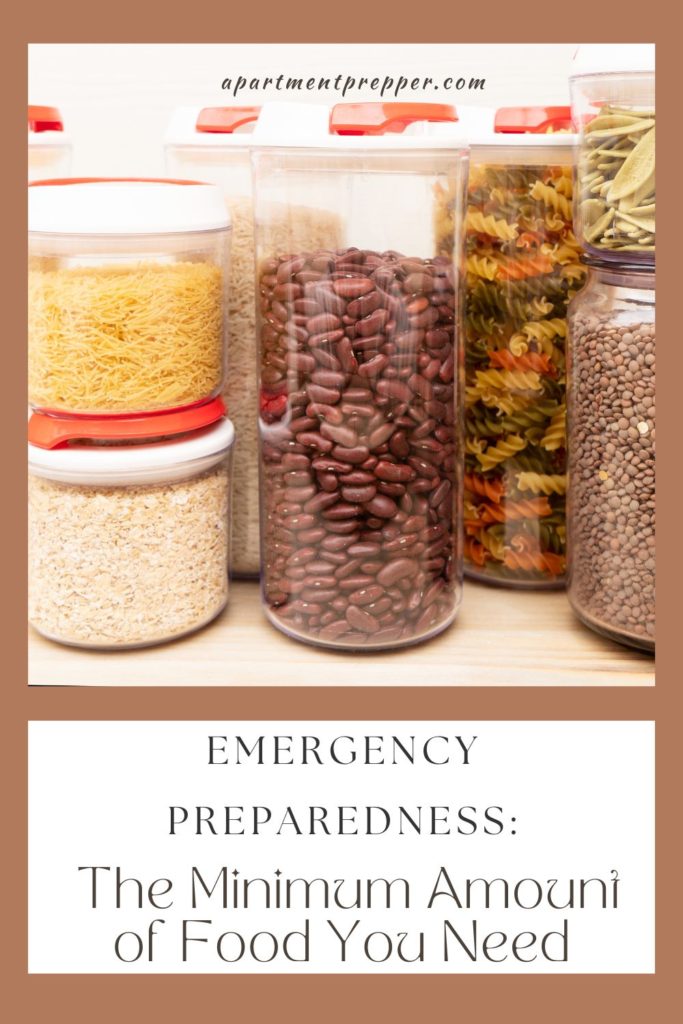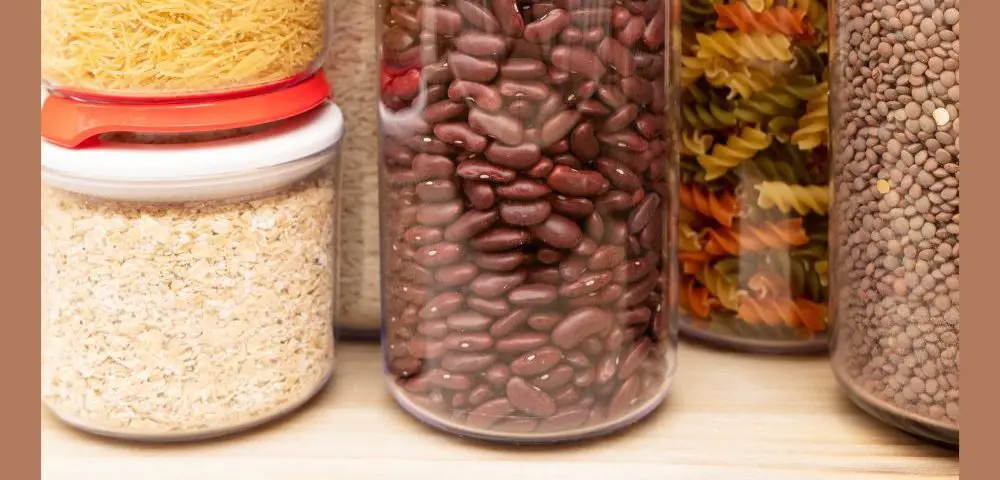Written by Bernie Carr
Emergencies can strike at any time, from natural disasters to unexpected events like power outages or supply disruptions. Having a sufficient emergency food supply on hand is crucial for ensuring the well-being of you and your family during these challenging times. With limited space and funds, a lot of people wonder how much food storage should they aim for. In this article, we will explore the minimum amount of food you should have in case of an emergency and provide essential food storage tips to help you stay prepared.
Why Keep an Emergency Food Supply?
Before delving into the specifics, here’s why having an emergency food supply is essential:
- Peace of Mind: Knowing you have enough food to sustain your family during an emergency can provide peace of mind and reduce stress.
- Survival: An adequate food supply can be a lifesaver during natural disasters or situations where access to food is limited.
- Self-Reliance: Relying on your own food stockpile allows you to be less dependent on external resources, especially during extended emergencies.
How Much Food Should You Have on Hand?
The minimum amount of food you should have in your emergency supply is based on the number of people in your household and the duration you want to be prepared for. Here’s a general guideline:
- One Week Supply: When you are just getting started, at a minimum, aim to have enough food to sustain your family for a week. This is typically the initial period during which emergency services may not be readily available.
- Two-Week Supply or more: Once you have a week covered, consider expanding your supply to cover a few more weeks. This ensures you can endure longer disruptions and recovery periods.
Essential Emergency Food Items
Your emergency food supply should consist of non-perishable, nutrient-dense items that require little to no preparation. Here’s a list of essential items to include:
- Bottled Water: Water is your most important resource. Ensure you have enough water for drinking, cooking, and sanitation (one gallon per person per day).
- Canned Goods: Canned vegetables, fruits, meats, and soups provide essential nutrients and have a long shelf life.
- Dried Foods: Items like dried fruits, nuts, and jerky are high in protein and can be stored for an extended period.
- Grains: Rice, pasta, and oats are versatile staples that provide sustenance and energy.
- Canned or Boxed Milk: These options are rich in calcium and can be used in cooking or as a beverage.
- Canned or Boxed Juice: A source of hydration and essential vitamins.
- Cereal and Granola Bars: Portable, high-energy snacks.
- Peanut Butter: A calorie-dense, protein-rich spread. Don’t forget the crackers!
- Canned Beans: A valuable source of protein and fiber.
- Spices and Condiments: Salt, pepper, and other seasonings can make your meals more palatable.
- Comfort Food: I like to include a few comfort items like chips, coffee and chocolate. They make everyone feel better and improve morale.
Food Storage Tips
Now that you know what to include in your emergency food supply, let’s explore some essential food storage tips to keep your provisions safe and effective:
- Store in a Cool, Dark Place: Keep your food in a dry, cool, and dark location. High temperatures can shorten shelf life, so avoid storing items in direct sunlight or near heat sources.
- Use Airtight Containers: Transfer items like rice, pasta, and cereal to airtight containers to prevent moisture and pests from compromising your supply.
- Rotate and Check Expiration Dates: Regularly check the expiration dates on your stored items and rotate them to ensure freshness. Consume and replace items that are nearing their expiration date.
- Label and Date: Label all containers with the contents and date of storage to help you easily identify and use items in order.
- First In, First Out (FIFO): When replenishing your supply, use the oldest items first. This practice ensures that your food doesn’t go to waste.
- Consider Dietary Restrictions: If you or your family members have dietary restrictions or allergies, be sure to include appropriate items in your emergency food supply.
- Include a Manual Can Opener: Many canned goods require a can opener, so having a manual one on hand is essential.
- Emergency Food Kits: Pre-packaged emergency food kits are available and provide convenient, ready-to-eat meals. Consider adding these to your supply for variety.
- Regularly Review and Update: Review your emergency food supply at least once a year to check for expired items, replace used items, and make necessary adjustments.
In Conclusion
Building an emergency food supply is a responsible and practical step toward preparedness. It ensures that you and your family have essential sustenance during times of crisis or unforeseen disruptions. By following the guidelines outlined here and practicing proper food storage techniques, you can rest assured that you’re well-prepared to handle emergencies and maintain the safety and well-being of your loved ones.
Starting your emergency food storage can be overwhelming at first, especially when you start reading about how much food storage other people claim to have. Don’t get overwhelmed. Start your food storage and aim for at least a week’s worth of food then build from there if you have the space and the means. It will cover most emergencies.
About the author
Bernie Carr is the founder of Apartment Prepper. She has written several books including the best-selling Prepper’s Pocket Guide, Jake and Miller’s Big Adventure, The Penny-Pinching Prepper and How to Prepare for Most Emergencies on a $50 a Month Budget. Bernie’s latest e-book, FRUGAL DIY has just been released on Amazon. Her work appears in sites such as the Allstate Blog and Clark.com, as well as print magazines such as Backwoods Survival Guide and Prepper Survival Guide. She has been featured in national publications such as Fox Business and Popular Mechanics. Learn more about Bernie here.
FB: https://www.facebook.com/apartmentprepper
Instagram: https://www.instagram.com/apartmentpreppers/
Twitter: https://twitter.com/AptPrepper
YouTube: https://www.youtube.com/channel/UC7vOtdbo-wiBeBxD6puCr1Q
Patreon: https://patreon.com/apartmentprepper
Pinterest: https://www.pinterest.com/aptprepper/
Today’s societal climate not supportive of prepping. With your help, we can keep bringing you content that is often suppressed. Help keep Apartment Prepper alive.
Join me on Patreon for ad-free content.

Or Help out via Paypal




